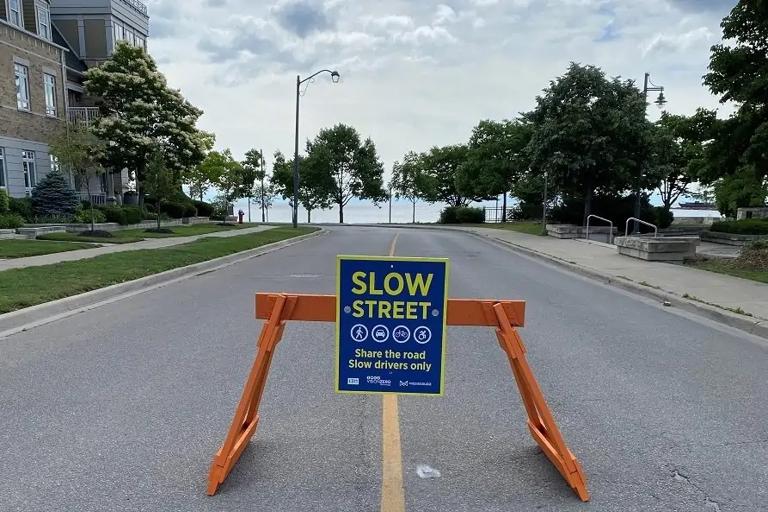Residents Push for Speed Limit Reductions on Post Road
Concerned over frequent speeding incidents, Bridle Path homeowners are lobbying for more signage and stricter enforcement.
May 07, 2025 at 03:18 • By Daniel Ko, Bridle Watch

A grassroots movement is gaining traction in Bridle Path as residents push for speed limit reductions along Post Road, one of the neighbourhood’s most scenic yet perilous routes. The call for change comes after a string of near misses involving pedestrians, pets, and cyclists, all attributed to cars exceeding the current 50 km/h limit.
“It’s a beautiful street, but it’s treated like a racetrack,” said homeowner Derek Wolfe, who has lived on Post Road for over a decade. “There’s no reason people should be going 70 in a residential area where kids ride their bikes.”
The group behind the campaign, ‘Slow Down Bridle,’ has collected more than 600 signatures on a petition urging the city to reduce the speed limit to 30 km/h and add physical traffic calming measures like speed humps, raised crosswalks, and digital feedback signs. They’ve also launched an Instagram account highlighting dashcam footage of reckless drivers.
Toronto Police Services confirm that complaints about speeding in the area have spiked in the past year. However, enforcement remains limited. “We allocate resources based on citywide data,” said a TPS spokesperson. “Bridle Path is low on the injury collision index, but we recognize the growing concern.”
Part of the issue stems from Post Road’s design. Its gentle curves and wide lanes create a false sense of openness, especially for out-of-area drivers using navigation apps that suggest it as a bypass to congested arteries. “They treat it like a shortcut,” said resident Naomi D’Souza. “But it’s our home.”
City staff say they are reviewing the petition and have initiated a traffic study to assess average speeds, traffic volume, and potential impact of proposed changes. Initial results are expected in six weeks. Until then, residents are taking matters into their own hands by posting homemade signs, reflective flags, and even placing lawn chairs at the edge of driveways to signal human presence.
The debate has divided opinion in the community. While many support the initiative, others argue that reducing speed limits could inconvenience delivery drivers and emergency responders. “We already wait too long for service calls,” said one property manager. “More bumps and signs will just slow everything down.”
Safety advocates push back, noting that response times in 30 km/h zones are minimally affected when streets are well-marked and maintained. “This isn’t about delay — it’s about prevention,” said public health researcher Dr. Aria Kim. “The evidence is clear: lower speeds save lives.”
Some residents have floated creative solutions, including installing solar-powered flashing beacons at key intersections or piloting an AI-enabled speed detection system that issues community warnings. While not legally enforceable, such measures could influence behavior through visibility and peer pressure.
Councillor Rebecca Tran has pledged to bring the issue to the next North York community council meeting and encourages both sides to participate in an open forum. “We’re not just talking about numbers,” she said. “We’re talking about how people experience their neighbourhood.”
As autumn approaches and school zones return to full activity, the urgency behind ‘Slow Down Bridle’ continues to build. Whether or not legislation follows, the message from many residents is unmistakable: safety, not speed, should set the pace on Post Road.